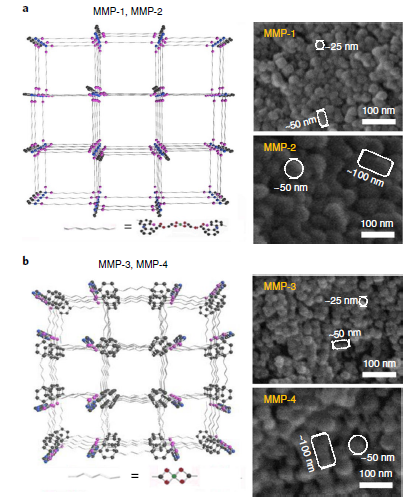Chinese Scientists Advance Gas Separation Technology
To cope with the global warming issue, it is crucial that people reduce carbon emissions, especially in industries. Scientists have proposed multiple means for carbon capture and natural gas separation, among which membrane-based separation processes continue to attract increasing attention for their low-energy consumption, operational simplicity and low environmental footprint compared with other gas separation techniques. Porous materials, especially the metal–organic frameworks (MOFs) are most widely used in gas separation, gas sorption, catalysis and drug delivery. However, MOFs are often unstable in moist environments where their structures are destroyed, limiting the use of MOFs in membranes since water is present in almost all carbon capture processes.

Representation of the crystal structures and morphological images of MMPs.[Photo provided to Chinadaily.com.cn]
Professor Wang Zhi’s team from Tianjin University together with a research team from Tianjin Polytechnic University discovered metal-induced ordered microporous polymers (MMPs) by combining metal ions, organic linkers and polymer chains into a single crystalline framework, offering a solution to overcome the challenges mentioned above. The MMPs demonstrate good controllability of crystal and framework size, as well as hydrolytic stability. They are readily fabricated into defect-free thin selective-layered membranes with high CO2 permeance and stable CO2/N2 selectivity under both humid and dry gas feed conditions, demonstrating promising CO2 membrane separation performance. This synthetic methodology could be extended to other polymers, potentially enabling facile synthesis of membrane materials.
The research result was published in Nature Materials with the title“Metal-induced ordered microporous polymers for fabricating large-area gas separation membranes”. (DOI:10.1038/s41563-018-0221-3). Joshua D. Moon and Benny D. Freeman from the University of Texas commented in an article published in the same journal that this discovery of stable polymer frameworks with controlled crystal and framework size could open up a wide area of future exploration that could have great implications for gas separation membranes, as well as other technologies such as absorbants.


















